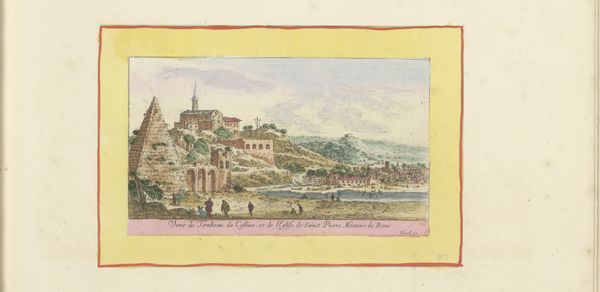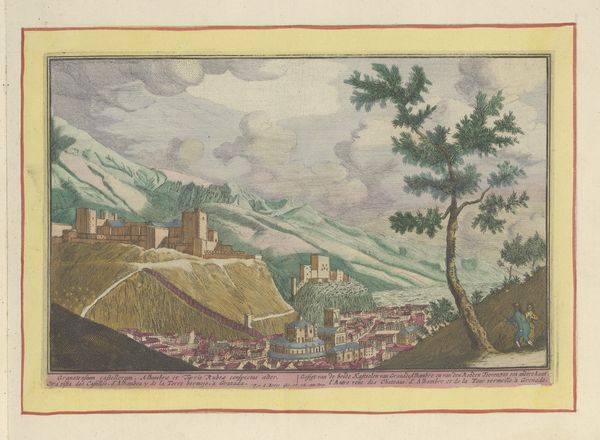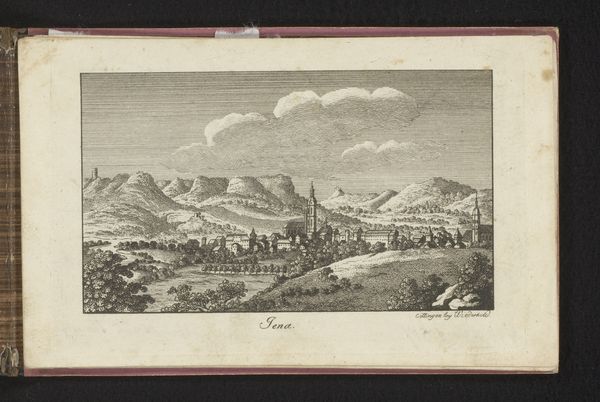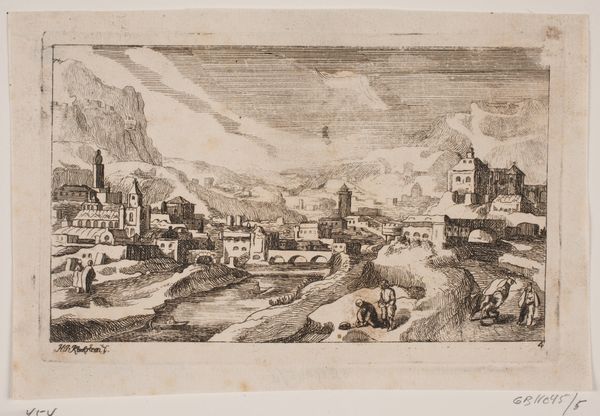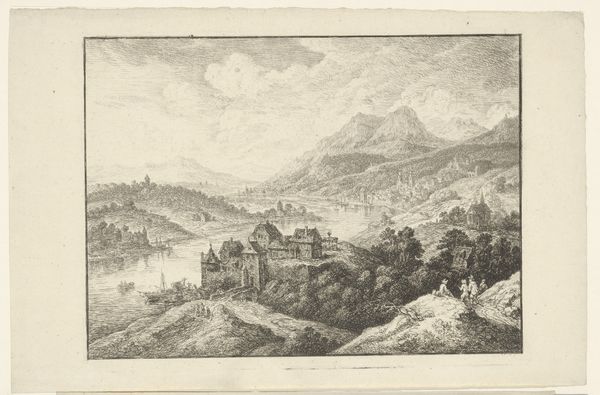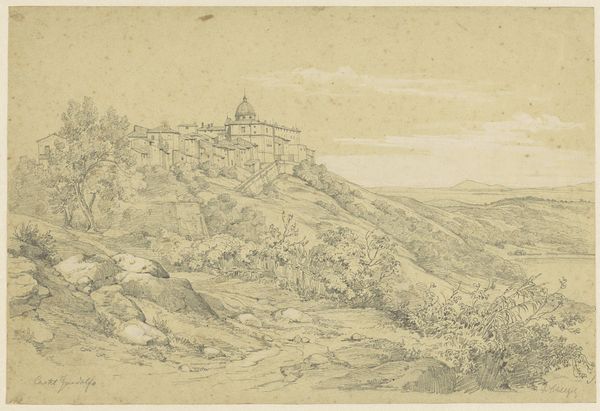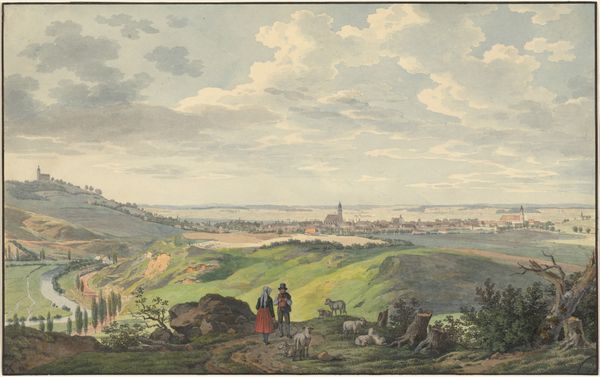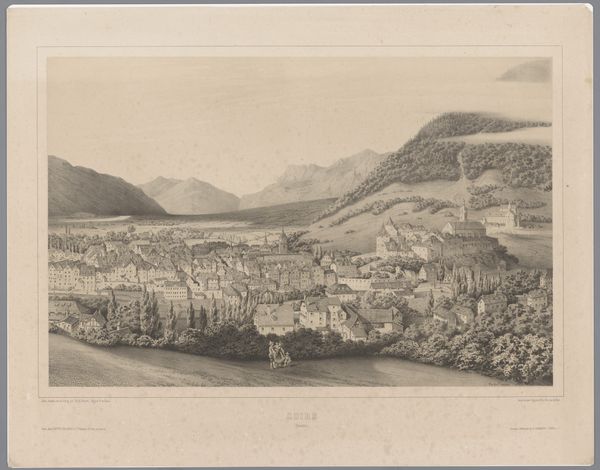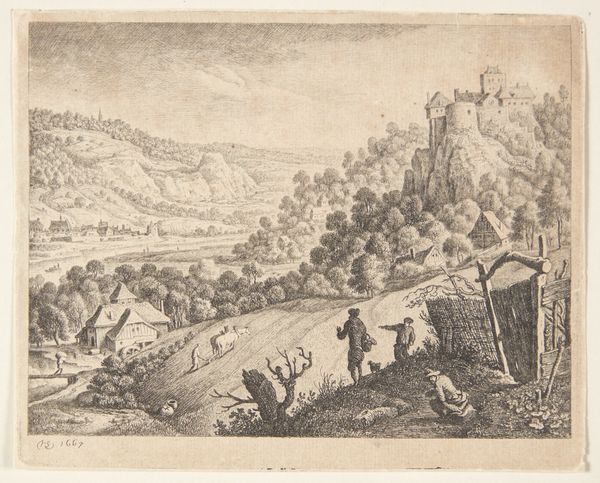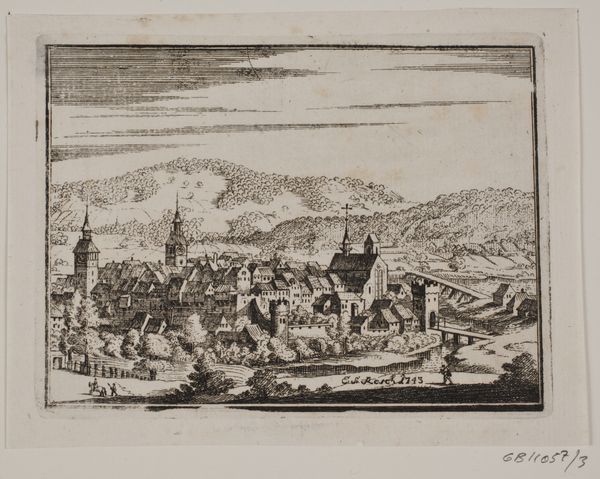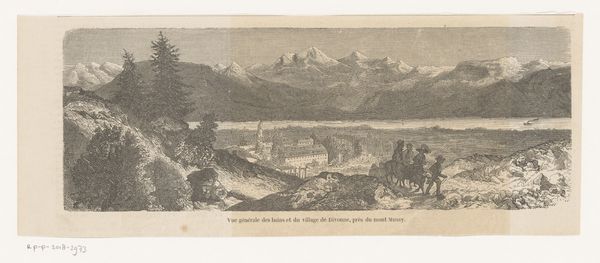
Dorf mit einer Kirche an einem Fluss, im Vordergrund ein Angler, ein Fährmann und zwei Bauern
0:00
0:00
drawing, painting, gouache, plein-air, paper, watercolor, ink
#
drawing
#
painting
#
gouache
#
plein-air
#
landscape
#
paper
#
watercolor
#
ink
#
romanticism
#
cityscape
#
genre-painting
Copyright: Public Domain
Curator: This artwork, held at the Städel Museum, presents us with "Village with a Church on a River, in the Foreground an Angler, a Ferryman and Two Farmers" by Caspar Schneider. Executed using gouache, watercolor, ink and pencil on paper. Editor: There’s such a serene, almost pastoral quality. It feels less like a bustling village scene and more like a tranquil escape. The muted tones add to that sense of quietude. Curator: That's fascinating because these kinds of genre scenes became incredibly popular precisely as industrialization accelerated and these ‘escapes’ became ever more valuable in the public imagination. We begin to see a romanticism emerging around simpler lifestyles and a presumed harmonious relationship with nature. Editor: Absolutely. And that romantic impulse seems evident here, not only in the overall atmosphere but also in the choice of specific imagery. Water, for example, has a rich symbolic history often associated with renewal and transition. Then there is the prominent presence of a church spire piercing the skyline, visually uniting earthly existence with higher powers and ideals. The humble fisher folk also bring archetypal elements of self-sufficiency and simplicity into play. Curator: You touch on an important element, which is Schneider's artistic approach in this image. Notice how the human figures, although detailed, are relatively small within the broader landscape. This compositional choice further underscores the relationship of humanity and nature, almost hinting at the insignificance of humans against a grand natural backdrop. Consider it against a time where urbanization began transforming the traditional relationship to place. Editor: I agree completely. Though there is also something charming in this vision of small town idyll. Like a window to simple joys where lives and labours seem seamlessly blended with the cycles of nature. Curator: Yes, and the depiction is a compelling cultural document too. It encapsulates anxieties related to industrial and urban expansion and showcases an appetite for this reimagined ideal lifestyle rooted in Romanticism. Editor: Precisely, in seeking solace in representations of harmonious village life, Schneider mirrors not just his era’s aesthetics, but reveals how our need to establish comforting symbolisms outlives specific eras and locations.
Comments
No comments
Be the first to comment and join the conversation on the ultimate creative platform.
